Hundreds march through Warsaw to mark 80 years since Nazis liquidated Jewish ghetto
Poland’s chief rabbi compares operation that sent 260,00 to their deaths to mass displacement of Ukrainians during Russian invasion
By AFP
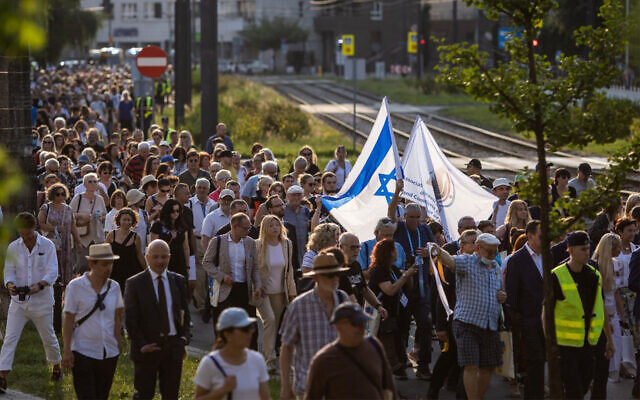
People attend a March of Remembrance during ceremonies on July 22, 2022 marking the 80th anniversary of the start of Nazi Germany's mass deportation of Jews from the Warsaw Ghetto to the death camp of Treblinka. (Wojtek Radwanski/AFP)
WARSAW, Poland — Hundreds of people marched through Warsaw on Friday to commemorate the 80th anniversary of the Nazi liquidation of the Jewish ghetto during World War II, with the war in Ukraine giving the event fresh resonance.
The procession passed through the location where Jews were deported from the ghetto to the Treblinka death camp in central Poland in 1942, killing 260,000.
Marchers carried symbolic ribbons bearing the names of the deportees.
This year’s march was dedicated to the theme of victims of deportations and forced displacement, with millions of Ukrainians having fled their homes due to Russia’s invasion on February 24.
Poland’s Chief Rabbi Michael Schudrich told the ceremony that the ghetto represented a “division” between its inmates, presented as evil, and the “good people” who lived outside it.
Russian President Vladimir Putin “has tried once again to divide people. Every time I hear people speak about a division between good and bad, it’s a red flag for me,” he said.
Nazi Germany created the Warsaw ghetto — the biggest of its kind in World War II — in 1940 to hold almost half a million Jews during its occupation of Poland.
Residents were crammed into a small neighborhood where disease and starvation were rampant, before a decree announcing the start of the ghetto’s liquidation arrived on July 22, 1942.
In three months, 260,000 people — a quarter of Warsaw’s population — were deported to Treblinka and killed as part of the Holocaust.
Marking 80 years since the murder of Warsaw's Jews
In July 1942, the SS launched its operation to systematically exterminate the Jews of Warsaw. A march to commemorate this genocide is taking place in Poland on Friday.
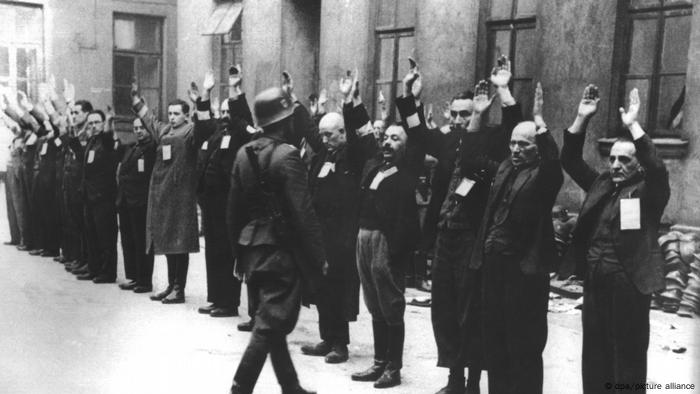
The deportation was carried out with utmost cruelty
Life was hell for Jews in the Polish capital, Warsaw, 80 years ago. Ever since Nazi Germany had invaded Poland in September 1939, they had been subjected to constant persecution by the occupiers, and from November 1940 onward they were confined to the Warsaw Ghetto in the northwest of the city. Up to 450,000 men, women, and children lived crammed together behind the high walls of the ghetto. Around 100,000 people had died of hunger or disease, or been killed in summary executions.
Leaving the sealed-off district without permission was punishable by death, as was providing any kind of outside help to the inhabitants of the ghetto. The guards would even shoot little children who smuggled in food or coal. Emaciated corpses lying by the side of the road became part of daily life.
SS officer Hermann Höfle gave the order to kill
Almost a third of the population of the Polish capital was made up of Jews before World War II. They had been an integral part of the city on the Vistula for centuries. July 22, 1942, would mark a tragic turning point.
On this day, Adam Czerniakow, an engineer and local politician, whom the Nazis had forced to become the head of the Warsaw Ghetto Jewish Council, wrote the following in his diary: "At 10 o'clock, Sturmbannführer Höfle appeared with his people. [ … ] We were told that all Jews, irrespective of sex and age — with certain exceptions — are to be deported to the East." Every day, Czerniakow was to prepare 6,000 people from the ghetto for deportation. The SS later increased that daily target to 10,000.
On July 23, Czerniakow wrote a farewell letter to his wife: "They are demanding that I kill the children of my people with my own hands. There is nothing for me to do but to die." He ended his life with a cyanide capsule — but his death did nothing to stop the extermination.
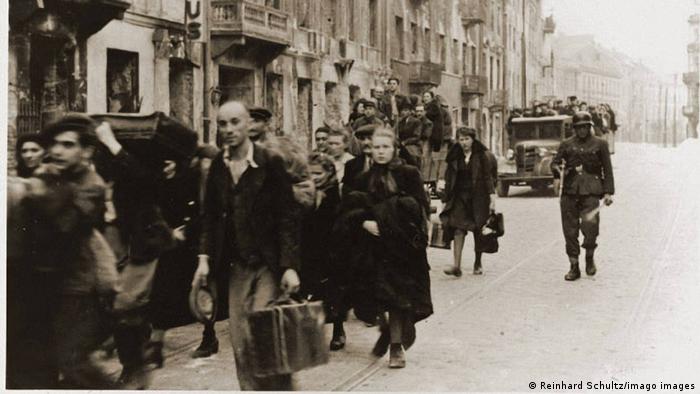
From November 1940, Jews were forced to move into the overcrowded Warsaw Ghetto, from which they were later deported
The gas chambers of Treblinka
The Nazis carried out the deportations with the utmost brutality, in order to nip any attempt at resistance in the bud. Each house was surrounded; its occupants were whipped and beaten as they were driven out into the courtyard, then taken to the so-called "Umschlagplatz" ("collection point") at the station.
People were taken to the Treblinka extermination camp in cattle trucks. After a long and miserable journey, they usually arrived only to be killed in the gas chambers that same day. The Germans disguised their operation, "Grossaktion" Warsaw, as "resettlement in the East," but many soon realized that they were being sent to their deaths.
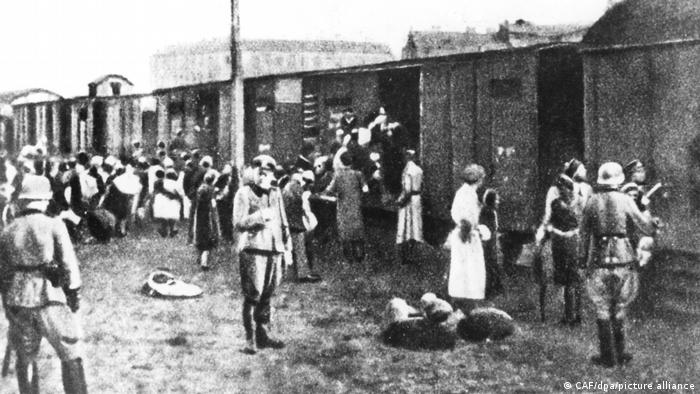
Every day, thousands of Warsaw Jews were crammed into cattle trucks and taken to Treblinka. Most were gassed on arrival
Janusz Korczak died alongside his children
In early August, Janusz Korczak, a respected doctor, teacher and the director of an orphanage, arrived at the collection point along with the children in his care. He had had a chance to flee the ghetto, but had refused to abandon the children who had been entrusted to him. To allay their fears, he told them that they were going on a "trip to the countryside" — and went with them to the gas chamber, as did his colleague Stefania Wilczynska.
Adina Blady-Szwajgier, a pediatric nurse, chose a different path: She gave some of her young patients morphine, killing them before they could fall into the Nazis' hands.
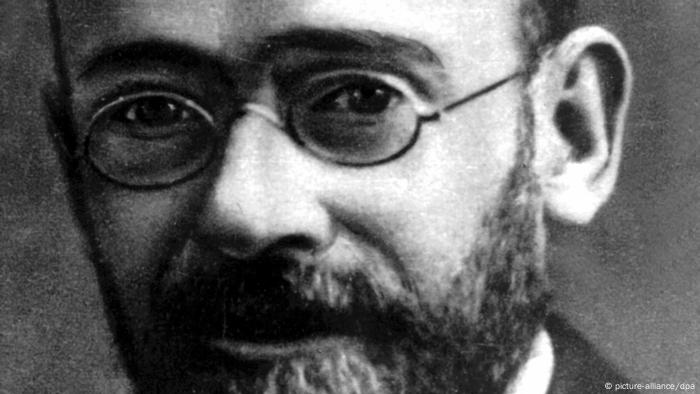
Janusz Korczak, the head of the Jewish orphanage in Warsaw, chose to stay and die with the children in his care
According to German sources, more than 250,000 Jews were deported to Treblinka in just two months; Jewish sources say the number was closer to 300,000. Several thousand people who were too old or too sick to travel were taken to Warsaw's Jewish cemetery and shot.
Around 35,000 Jews were left alive, and sent to work in factories. Between 20,000 and 25,000 people escaped deportation, and continued to live "illegally" in what was left of the ghetto. In April 1943, those who remained were scheduled for deportation, which sparked the Warsaw Ghetto Uprising, in which 13,000 Jews were killed. Those who remained were sent to Treblinka and other camps. As an eyewitness wrote at the time: "Jewish Warsaw has ceased to exist." The biggest Jewish community in Europe had been erased.
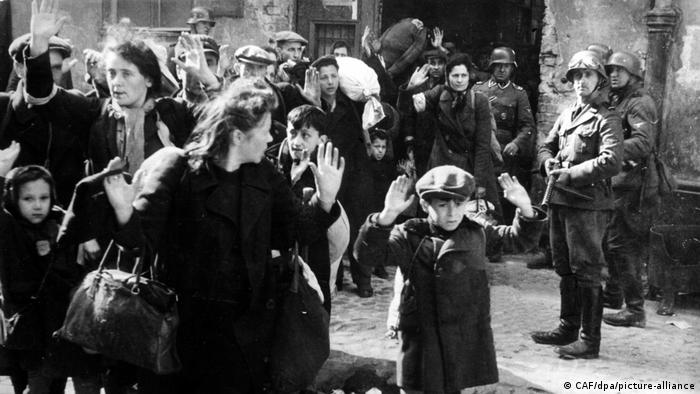
People were driven out of their houses, often brutally, and rounded up for deportation
Globocnik's evil plan
The murder of the Warsaw Jews was, however, only part of the grand plan, code-named "Operation Reinhardt," to exterminate all Jews in German-occupied Poland.
As early as October 13, 1941, Heinrich Himmler had instructed Odilo Globocnik, the head of the SS and police in the Lublin region, to murder the Jews in his area of control, the south of occupied Poland. Globocnik immediately started to construct the first of several extermination camps — Belzec. Later, two more were built — Sobibor and Treblinka — where victims were gassed immediately on arrival. From 1943 onward, Majdanek near Lublin also served as an extermination camp.
The killing continued until November 1943, when these camps were dismantled and disguised, and the last remaining prisoners shot. The Holocaust researcher Stephan Lehnstaedt estimates that the total number of victims of Operation Reinhardt was at least 1.8 million, perhaps as many as two million. The Nazi extermination of European Jews, which later became known as the Holocaust, continued until 1945. A total of six million Jews were killed. Hundreds of thousands of Sinti and Roma were also murdered.
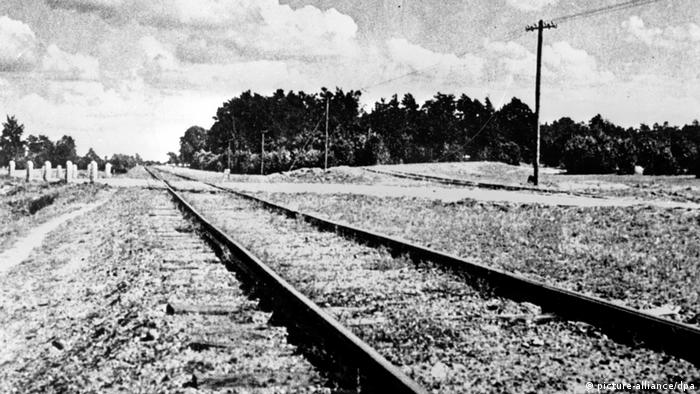
These train tracks led into the Treblinka extermination camp. The Nazis later tried to disguise their crimes
Almost no survivors of the forgotten camps
Only about 150 people in total survived Belzec, Sobibor, and Treblinka. For many years, these extermination camps were almost forgotten; the camp at Auschwitz-Birkenau became the main symbol of the Holocaust. Only gradually did the Operation Reinhardt sites return to public consciousness, but it was not until 1988 that a memorial was erected at the former "Umschlagplatz" where the Warsaw Jews had been assembled for deportation.
This is where the march to commemorate the start of Operation Reinhardt will begin on July 22. From the station, it will progress to Nalewski Street, once the heart of Warsaw's Jewish quarter. Today, all that remains from the time of the ghetto and the deportation are the cobblestones and the disused tramlines.
This article was translated from German.
No comments:
Post a Comment